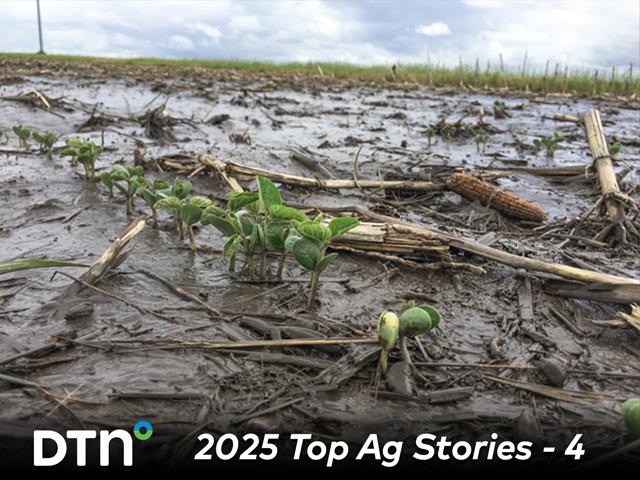Todd's Take
Cotton's Bullish Hopes
If we didn't know anything about grain markets other than Friday's Commitment of Traders data, we might think things are going pretty well across rural America. After all, noncommercial traders were 75% long in corn, 76% long soybeans, 87% long soybean meal and 69% long in K.C. wheat. That is a lot of bullish optimism.
As mentioned in last week's column, bullish speculators can be a blessing for producers, bringing higher grain prices when they're buying on the way up. But with the blink of an eye, they can also turn into a curse if, at some point, the market disappoints all that optimism. Depending on the context, it may not take much of a price drop to turn heavy net-long positions into a new source of selling. Monday showed us one example of the danger of traders overloaded on one side of the market.
The one crop that has traders even more bullish than soybean meal this spring is cotton, having convinced 90% of trader positions to take the long side of the market as of March 13. Since hurricanes Harvey and Irma threatened crops last fall, world demand for U.S. cotton has been active with outstanding export sales up 61% so far in 2017-18 and actual U.S. cotton shipments down 6%.
Similar to corn, cotton's outstanding sales may not all ship by the end of July 2018, but USDA did raise the estimate of U.S. cotton exports from 14.50 million to 14.80 million bales in the March WASDE report. USDA also lowered the estimate of U.S. ending cotton stocks from 6.00 million to 5.50 million bales for 2017-18, a comfortable 30% of annual use.
USDA's perspective of world cotton is where things start to look a little more bullish. While USDA's early projection expects a slight increase in U.S. harvested acres in 2018, the world's cotton acres are expected to be down 3% in 2018-19 to 79.1 million or 32 million hectares (Cotton: World Markets and Trade, http://bit.ly/…).
P[L1] D[0x0] M[300x250] OOP[F] ADUNIT[] T[]
Further, if USDA is correct, world ending stocks of cotton will fall from 88.6 million to 82.7 million bales in 2018-19, or 67% of annual use. Yes, 67% is a large surplus of world cotton, but keep in mind that non-exporting China holds 41.0 million bales of the surplus in 2017-18, expected to drop to 33.6 million bales in 2018-19.
According to USDA, the world's 2018-19 reduction of ending cotton stocks will be the third in four years. China's ending supplies will be down a fourth consecutive year, and it is in that environment of shrinking international supplies that U.S. cotton exports are looking more promising.
The more-bullish factor lifting noncommercial hopes in the U.S. lately has been weather. The past three years, over 50% of U.S. upland cotton was grown in Texas, the bulk of which comes from northern Texas. If you've been following HRW wheat, you know the area hasn't had significant rain in over five months and is in severe and extreme drought.
The Mississippi Delta is another important cotton region, which has had flooding problems early in 2018. Finally, southern Georgia and the Carolina coasts have been dry, but are expecting rain this week.
In the first full week of March, the crop wasn't even planted yet and spot prices came close to hitting last year's high of 87.18 cents per pound -- a lively start in 2018. Fundamentally, we cannot ignore the seriousness of drought in northern Texas and the potential bullish impact it holds for U.S. cotton prices.
Technically, with 90% of speculators on the long side of the market, it is important that May cotton prices hold above 76.44 cents, the low so far in 2018. There is plenty of uncertainty ahead, but a breach below support, if it happened, would put bullish traders under pressure to liquidate.
On March 29, USDA will issue its Prospective Plantings report. As the most-bullish contender among traders, it will be interesting to see if cotton entices more plantings than USDA's early estimate of 13.3 million acres. Either way, cotton will be an interesting watch in 2018.
Todd Hultman can be reached at Todd.Hultman@dtn.com
Follow him on Twitter @ToddHultman1
(CZ/AG)
Copyright 2018 DTN/The Progressive Farmer. All rights reserved.



